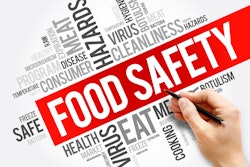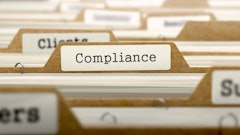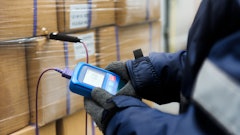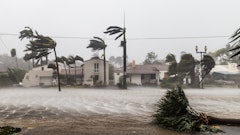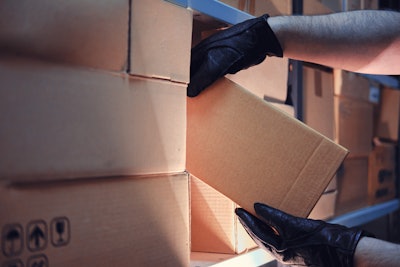
Food and beverage has been the leading if not No. 1 target for cargo theft for the past 15 years; some would argue since 2008 even. From sophisticated organized crime rings targeting premium items like seafood, specialty items and organic products targeted for their high resale value, to thieves taking advantage of unsecured loads, the issue continues to plague the food logistics industry.
Preventing theft in the first place is a priority, but what can be done once the theft occurs?
Properly handled insurance claims can mean the difference between swift recovery and prolonged financial strain. It entails coordination between multiple parties, detailed documentation requirements, and strict adherence to policy provisions.
The following are recommendations for navigating cargo theft occurrences to help achieve the best outcomes.
Top critical dos
Document everything immediately. Providing comprehensive documentation in a timely manner is crucial. All tangible evidence should be photographed from multiple angles to capture any and all signs of criminal activity such as forced entry, damaged seals, or tampered evidence. Pertinent details such as exact times and weather conditions should be noted, plus any unusual circumstances – such as route and timing inconsistencies, load documentation irregularities or technology and security gaps – should be included in reports, too.
Food shipments also documents such as FDA certificates, organic certifications, and traceability records. Theft can disrupt this documentation chain, making it difficult to prove product authenticity and quality for salvage purposes.
Be sure to secure digital recordings from all cameras in proximity to the theft area.
Contact authorities Without delay. Law enforcement reports provide crucial third-party validation of incidents and establish an official timeline so contact the appropriate officials as soon as theft is discovered.
Have basic information required by insurance companies such as case numbers and the contact information of the investigating officers readily available. Making the job easier for authorities will help advance the claims process. Check your policy for timeframe and data requirements to ensure coverage eligibility.
Notify your insurer and broker promptly. While this may seem obvious, contacting the insurance carrier and broker can sometimes take a back burner. Most insurance policies have set notification periods, usually 24-72 hours after discovery, so make sure this is at the top of your to-do list or you may risk losing coverage.
Let your representatives know you are following procedures and that investigations are underway. Your provider may launch their own investigators and send salvage experts when necessary.
Preserve physical evidence. Physical evidence is critical in determining how theft occurred and whether established security protocols were followed. The crime scene should remain untouched and undisturbed until legal authorities and insurance investigators are able to complete their examinations.
If vehicles or other equipment must be moved for safety reasons, take multiple photographs while they are still in their original positions. All recovered merchandise, damaged packaging and property and security devices such as cameras should be preserved for review and analysis by the designated experts. There is no such thing as too much documentation.
Maintain detailed and clear shipping and claims documents. All original shipping documents, bills of lading, and delivery receipts should be saved to solidify the claim's legitimacy.
Compile comprehensive proof of loss documentation, including original invoices, purchase orders, and shipping manifests. Replacement costs should be calculated using current market values rather than historical purchase prices. Policies typically cover replacement costs or actual cash value.
When preparing reports, include all consequential damages such as expedited shipping costs for replacement goods, storage fees, and other expenses where covered.
Coordinate with all stakeholders. As with all business transactions, communication is key. Keep all vested parties including insurance representatives, law enforcement and third-party logistics providers apprised of the investigations and claims statuses throughout the entire process.
Doing so will help prevent misunderstandings and ensure all parties are on the same page throughout the investigation. Keep solid records of all communications for future reference, as disputes may arise regarding verbal agreements or commitments made during the claims process.
Take advantage of risk management and other services offered by insurers. While focused on resolving current claims, don't overlook opportunities to strengthen security measures and reduce future theft risks. Many insurers offer risk management services and may provide premium credits for implementing augmented security procedures. Use the claims experience as a learning opportunity to identify vulnerabilities and improve overall cargo protection strategies.
The critical don'ts
Don't speculate. Don’t make statements about potential causes such as security failures or employee negligence, or accept responsibility during initial interactions with authorities or insurers
Even seemingly innocuous comments can be misconstrued or taken out of context and possibly used against your company to deny or reduce claim payments. Leave determinations about fault and causation to professional investigators with access to complete information.
When communicating about the situation be sure to stick to factual observations and avoid speculating about potential issues.
Don't overlook policy requirements/warranties. In cargo theft logistics insurance claims, overlooking policy requirements and warranties can be financially devastating and legally problematic.
Policies contain specific conditions that must be satisfied for coverage to apply, including using approved routes, digital tracking, maintaining vehicle security standards, and implementing driver protocols during stops. Failing to comply with these conditions can void coverage entirely, regardless of the theft's circumstances.
Insurance warranties are fundamental conditions of coverage. For example, if your policy includes a warranty that cargo will only be transported by vetted drivers with clean records, using an unqualified driver could void coverage even if that driver wasn't responsible for the theft.
Don't automatically accept initial settlement offers. While it may be tempting to accept preliminary settlement offers, these may not cover the full extent of losses. Take the time to thoroughly calculate all damages, including hidden costs like customer relationship impacts and supply chain disruption expenses.
Food products involved in theft may face contamination issues due to improper handling or storage during the crime. Even if recovered, products may be unsellable due to food safety concerns, requiring adjusters to treat them as total losses despite physical recovery.
In today’s complex logistics industry, with multiple providers, brokers, forwarders and other vendors, it may be necessary to work with your company’s legal counsel to ensure settlement amounts are sufficient.
Don't neglect subrogation opportunities. A subrogation claim is when an insurance company seeks to recover money it paid out on a claim by pursuing the party that was actually responsible for the loss. This puts the onus on the cargo owner’s insurance company to pursue recovery which could be the carrier, freight forwarder, warehouse operator, or other logistics service provider.
This process can be complex because logistics often involves multiple parties across different jurisdictions, each with varying levels of liability and insurance coverage.
If third parties bear responsibility for the theft through negligence or security failures, your insurer may have subrogation rights to recover losses from those parties. Preserve all contracts with logistics providers, security companies, and facility operators. Don't release any parties from liability without consulting your insurer, as this could impair valuable recovery opportunities.
While an insurer cannot subrogate against a bad actor necessarily, goods are often stolen from a provider who bears responsibility. Don’t forget to hold all such parties liable by putting them on notice when the loss is first discovered.
Moving forward
Cargo theft in the food industry presents unique challenges for claims adjusters due to the perishable nature of products and specific vulnerabilities in the supply chain
Successful management requires preparation, attention to detail, and professional guidance throughout the process. To achieve the best claim outcomes, organizations should choose a claims partner that will define policy requirements and help establish clear incident response procedures.
The key lies in treating each claim as both a recovery opportunity and a learning experience that strengthens future risk management efforts. By following these essential guidelines, supply chain professionals can protect their organizations' financial interests while contributing to industry-wide efforts to combat cargo theft through improved security practices and effective loss recovery strategies.





